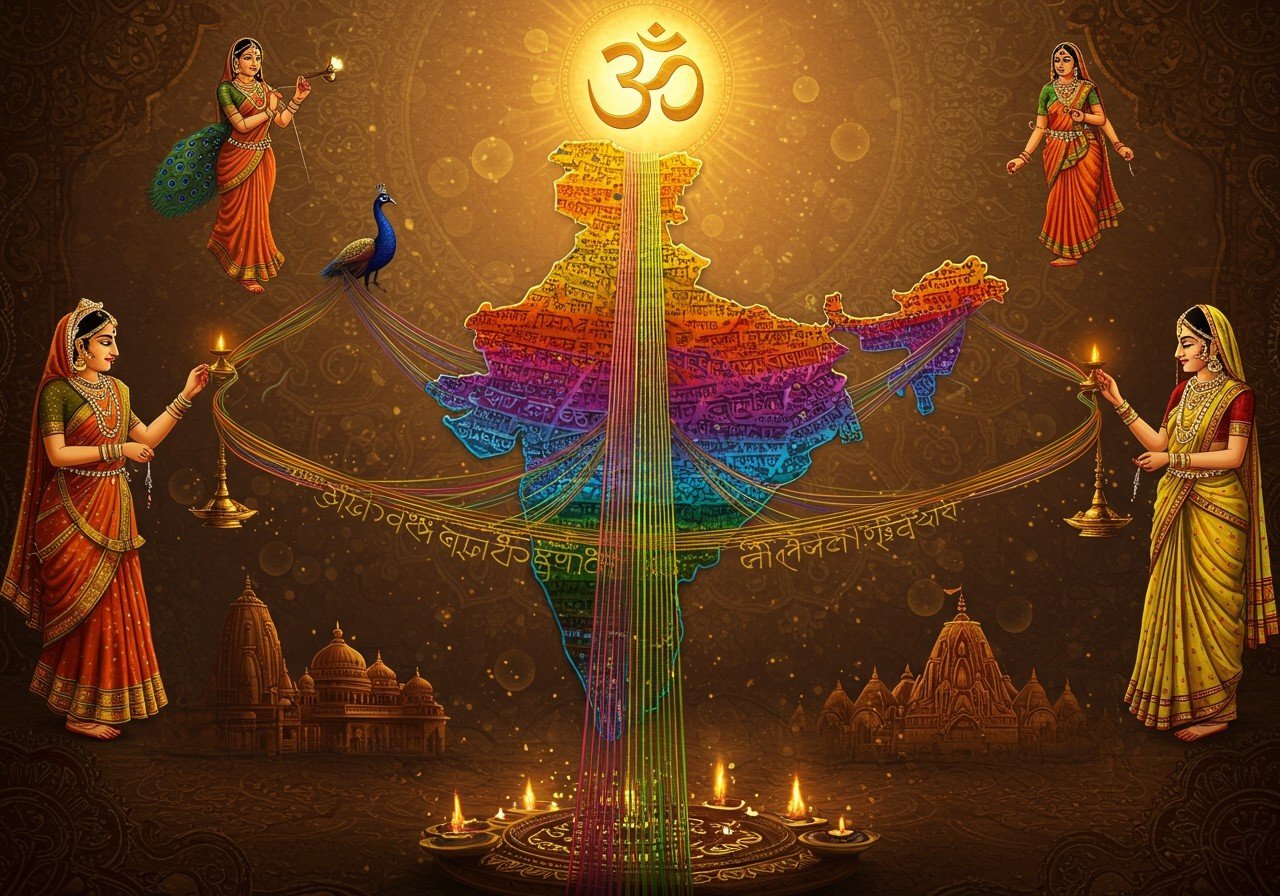
India, a land of immense cultural diversity, boasts a rich tapestry of languages. With 22 officially recognized languages and hundreds of dialects, the linguistic landscape is as varied as the country’s heritage. This guide explores the languages spoken across India’s states, offering insights into their role in shaping the nation’s identity. Whether you’re a language enthusiast or curious about India’s linguistic heritage, this guide provides a detailed look at the languages that define India.
Historical Roots of Language Diversity in India
The historical roots of India’s language diversity run deep. Centuries of migrations, invasions, and trade routes have shaped how languages evolved and spread. Ancient empires like the Maurya and Gupta influenced linguistic boundaries significantly. The British Raj introduced English, altering language policies profoundly. After gaining independence, India reorganized its states based on language to preserve regional tongues. Language remains key to cultural identity and social dynamics in India, reflecting its complex history and diverse society.
Languages of Northern India
Northern India showcases a variety of languages. In Uttar Pradesh, Hindi is predominant, accompanied by Awadhi and Bhojpuri dialects. Punjab is dominated by Punjabi, known for its rich literary tradition. Himachal Pradesh features Dogri and Pahari languages. Urdu holds historical significance in the region. Sanskrit remains culturally important as a classical language. Migration and urbanization influence linguistic trends, adding to the region’s complexity.
Languages of Southern India
Southern India is known for its distinct linguistic landscape. Tamil Nadu celebrates Tamil, a classical language with ancient literary heritage. Kerala’s Malayalam stands out with its unique script and literary contributions. Kannada dominates Karnataka, alongside Tulu and Konkani in specific areas. Telugu is prominent in Andhra Pradesh and Telangana, boasting a rich historical evolution. Dravidian languages deeply impact the region’s socio-cultural fabric. English serves as a common language in urban centers.
Languages of Eastern and Northeastern India
Eastern and Northeastern India are linguistically diverse regions. Bengali is the primary language in West Bengal, wielding a strong cultural influence. Assamese leads in Assam, coexisting with Bodo and various tribal languages. Nagaland has multiple tribal languages thriving within its borders. English serves as an official language in several northeastern states. Ongoing efforts strive to preserve endangered languages amidst numerous challenges. Migration significantly influences linguistic patterns in these areas.
Languages of Western India
Western India offers a rich linguistic tapestry. Marathi serves as Maharashtra’s official language, carrying historical significance. Gujarati dominates in Gujarat, renowned for its vibrant cultural expressions. Rajasthan features Rajasthani languages and dialects. Hindi and English hold influence in urban centers. Language plays a crucial role in regional identity and cultural festivals. Trade and migration significantly impact language diversity in western India.
The Role of Language in India’s Cultural Identity
Language is vital to India’s cultural identity, influencing social interactions, rituals, and traditions across regions. Preserving language is key to maintaining cultural heritage. Initiatives promote regional languages and dialects, ensuring their survival. Language plays a crucial role in education and cultural transmission, enriching India’s literature, music, and arts. Amidst diversity, language fosters national unity.
How Poojn.in Supports India’s Linguistic Diversity
Poojn.in simplifies puja shopping across India’s diverse linguistic regions. Our website and app support multiple Indian languages, enabling you to browse and order puja items in your preferred language. We offer region-specific puja items and religious materials tailored to the customs and traditions of different states. For Sanskrit texts and mantras, we provide accurate transliterations in various regional scripts.
Our product descriptions incorporate local names and terms for puja items commonly used in different states. This helps you find precisely what you need, whether you call it “kumkum” in Tamil Nadu or “sindoor” in Bengal. Our customer support team is multilingual, ready to assist you in various Indian languages.
The Poojn mobile app automatically detects your location and displays relevant regional festivals and puja items. We stock specific items needed for regional festivals like candles for Chhath Puja in Bihar, Ganesh Chaturthi in Maharashtra, or Pongal in Tamil Nadu.
Visit Poojn.in or download our app to explore our complete range of puja items with multi-language support. We deliver authentic puja supplies across India while respecting and preserving the unique religious traditions of each state.
Celebrating India’s Linguistic Heritage
India’s linguistic diversity is much more than just a collection of languages; it is a vibrant celebration of its cultural heritage and historical journey. Each language, with its unique sounds and scripts, adds color to the nation’s cultural tapestry, weaving stories of tradition, identity, and community. As we recognize and respect this diversity, we understand how language transcends mere communication, becoming a vital part of rituals, festivals, and daily life. In this journey through India’s linguistic landscape, we witness the strength of unity in diversity. Languages connect people to their roots and foster a sense of belonging, while also embracing change and modernity. By preserving and promoting regional languages, we ensure that India’s rich cultural legacy continues to thrive for future generations.
As we conclude this guide, let us celebrate the beauty of India’s languages, acknowledging their role in shaping the nation’s soul. Whether spoken in bustling cities or quiet villages, each language carries the essence of its people, making India a truly unique and harmonious blend of voices.
FAQs on India’s Linguistic Tapestry: A State-by-State Guide to Language Diversity
What are the official languages of India?
India recognizes 22 official languages, including Hindi and English as the primary official languages of the Union. Each state also designates its own official language(s).
Which state in India has the most languages?
Arunachal Pradesh is renowned for its exceptional linguistic diversity, with a wide array of languages spoken, showcasing India’s rich linguistic tapestry.
Can you name some languages spoken in South India?
Major languages of South India include Tamil in Tamil Nadu, Telugu in Andhra Pradesh and Telangana, Kannada in Karnataka, and Malayalam in Kerala. These Dravidian languages contribute significantly to the region’s unique cultural identity.
What language is spoken in West Bengal?
Bengali is the official language of West Bengal, widely spoken and deeply intertwined with the state’s cultural heritage and literary traditions.
Are there any states in India with multiple official languages?
Yes, several states have multiple official languages. For instance, Maharashtra recognizes both Marathi and Hindi, while Jammu and Kashmir designates Urdu, Hindi, and English as official languages.
Which language is primarily spoken in Gujarat?
Gujarati serves as the primary language spoken in Gujarat, playing a central role in the state’s cultural identity and daily communication.
How does the linguistic tapestry of India impact its culture?
India’s linguistic diversity significantly enriches its culture by contributing a wide range of traditions, literature, music, and art forms. This reflects and celebrates the unique identity of each region. Sanskrit mantras are a great example of this cultural influence.
What role does language play in India’s education system?
Language is integral to India’s education system. Many states offer education in their regional languages alongside Hindi and English, promoting cultural heritage, inclusivity, and accessibility to education.


